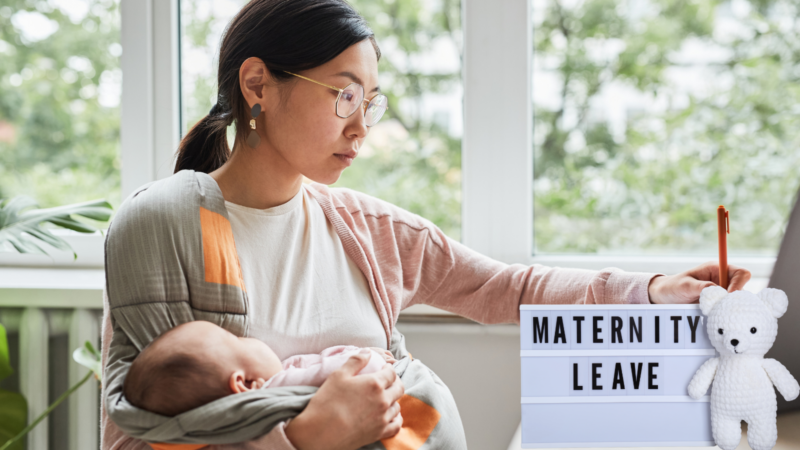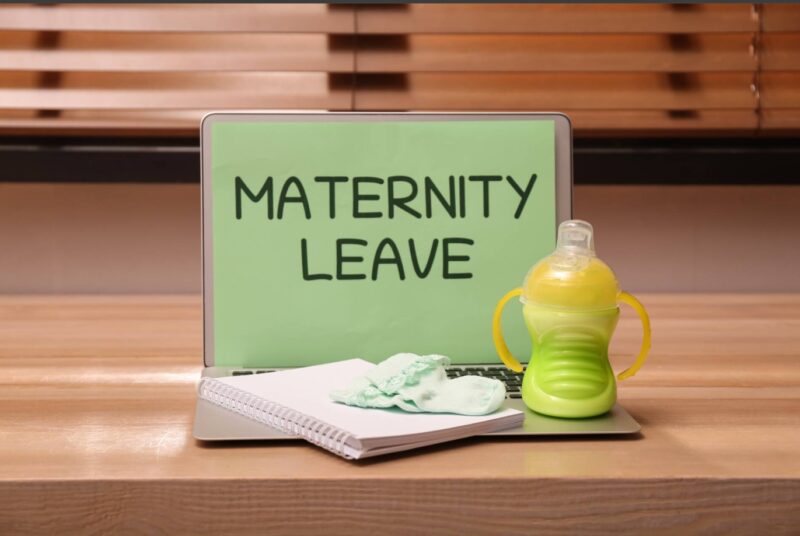Let’s talk about maternity leave in California. If you’re a soon-to-be mom, you might be wondering just what your rights are when it comes to taking time off to welcome your new bundle of joy.
Spoiler alert: California’s maternity leave policies are some of the most comprehensive in the U.S. But is it enough? Let’s break it down.
The Basics of Maternity Leave in California

In California, women have the right to take maternity leave without losing their job. And in some cases, they even get paid while they’re off.
Sounds pretty good, right? Well, let’s dig into the details to see what’s really on offer.
Key Aspects to Have In Mind
Eligibility and Duration
- Employees are eligible for up to 12 weeks of unpaid, job-protected leave under the California Family Rights Act (CFRA) for the birth, adoption, or foster placement of a child.
- New mothers can take up to four weeks of disability leave before delivery and up to eight weeks after a cesarean delivery (six weeks for a standard delivery).
Paid Family Leave (PFL)
- California’s PFL program provides up to eight weeks of paid benefits to workers who need time off to care for a new child or a seriously ill family member.
- The benefit amount is approximately 60% to 70% of the employee’s weekly wages earned 5 to 18 months before the claim. For 2024, the maximum weekly benefit is $1,620.
San Francisco Paid Parental Leave Ordinance (PPLO)
- This local ordinance requires employers with 20 or more employees to provide supplemental compensation to employees receiving PFL benefits, ensuring they receive up to 100% of their normal weekly wages.
State Disability Insurance (SDI)
- The SDI program provides partial wage replacement benefits to eligible California workers who are unable to work due to a non-work-related illness, injury, or pregnancy.
- Changes to the SDI and PFL programs are expected in 2024, potentially impacting benefits and eligibility.
Types of Maternity Leave
First up, we’ve got Pregnancy Disability Leave. This gives you up to four months off if you’ve got a pregnancy-related disability.
We’re talking about things like severe morning sickness, prenatal care, and recovery from childbirth.
The best part? There’s no minimum length of service required, so even if you’ve just started your job, you’re covered.
Family Leave
Next, there’s Family Leave under the California Family Rights Act (CFRA). This lets you take up to 12 weeks off to bond with your new baby.
The catch? You need to have worked at least 1,250 hours in the past 12 months and be employed by a business with more than five employees.
Reasonable Accommodation Leave
Sometimes, pregnancy comes with extra complications. That’s where Reasonable Accommodation Leave comes in.
If you need more time off beyond PDL and CFRA, you can request additional leave as reasonable accommodation for your pregnancy-related disability.
Your employer is supposed to accommodate unless it causes them undue hardship.
Combining Leaves for Extended Time Off
Here’s the kicker: you can combine these different types of leave. Imagine taking four months off under PDL, then stacking another 12 weeks under CFRA.
You’re looking at potentially more than seven months of maternity leave. Not too shabby, huh?
Eligibility and Coverage
Most employers in California are covered, including state and local government entities. Plus, part-time employees are eligible too. No minimum length of service is required for PDL, so you’re covered from day one.
Legal Protection Against Pregnancy Discrimination

No one should have to deal with discrimination, especially not when they’re pregnant. California laws protect you from being treated unfairly because of pregnancy or related conditions. This means your employer can’t fire you, demote you, or treat you differently because you’re pregnant.
Employer Obligations
Reinstatement Rights
After maternity leave, your employer has to reinstate you to the same or a comparable position unless there’s a very good reason not to.
Think company restructuring or layoffs, but even then, they’ve got to prove it wasn’t because of your leave.
Accommodation Requirements
Employers also need to accommodate pregnancy-related disabilities. This could mean providing more frequent breaks, modifying your work duties, or even giving you a stool to sit on if you’re on your feet all day.
Detailed Definitions and Requirements
What Counts as a “Disability”?
When it comes to pregnancy, “disability” covers a lot. Severe morning sickness, gestational diabetes, preeclampsia, and recovery from childbirth are all considered disabilities under California law.
If any of these conditions affect your ability to work, you’re entitled to leave and reasonable accommodations.
Reasonable Accommodations
So, what exactly are reasonable accommodations? These could include adjusting your work schedule, providing equipment that makes it easier for you to work, or even transferring you to a less strenuous position temporarily.
Your employer has to make these accommodations unless it’s really going to mess up their operations.
Procedure for Taking Leave
Requesting maternity leave involves a bit of paperwork. You’ll need to inform your employer, provide medical documentation if necessary, and adhere to certain timelines.
Typically, you should give your employer at least 30 days’ notice if you can foresee the need for leave.
Legal Framework
California has a robust legal framework to ensure your rights are protected during maternity leave. If your employer denies your rightful leave, you can file a complaint with the California Department of Fair Employment and Housing (DFEH). They’ll investigate and, if necessary, take action against your employer.
How Maternity Leave Payments Work
In California, both private and public sector employers must participate in state disability insurance programs.
These programs fund the Pregnancy Disability Leave program and the Paid Family Leave program, providing some level of income continuity during maternity leave.
So, while you’re off taking care of your newborn, you still get a paycheck. Not your full salary, but it’s better than nothing.
Specific Conditions and Additional Rights
California’s laws also address specific pregnancy-related conditions. For instance, if you develop preeclampsia, you can start your maternity leave early. And if you experience miscarriage or pregnancy loss, the laws ensure you get the time and accommodations needed to recover.
Moreover, if you have conditions like gestational diabetes or postpartum depression, you’re entitled to reasonable accommodations to help you manage your work and health.
Is It Enough?
California’s maternity leave policies are undoubtedly generous compared to many other states. You get a good chunk of time off, legal protections, and in many cases, some form of income while you’re off. But is it enough?
Let’s be real. No amount of leave can truly prepare you for the whirlwind that is new parenthood. There’s always the stress of transitioning back to work, the juggling act of childcare, and the emotional rollercoaster that comes with leaving your baby.
However, having a solid foundation of rights and benefits certainly makes a huge difference. For many new mothers, California’s policies provide much-needed peace of mind. They ensure job protection, offer financial support, and mandate reasonable accommodations.
Yet, there’s always room for improvement. Extended leave options, higher pay during leave, and more support for part-time and lower-income workers could make a significant impact.
Summary
California’s maternity leave policies offer a robust framework for supporting new mothers. From Pregnancy Disability Leave to Family Leave and reasonable accommodations, the state ensures that mothers have the time and support needed to care for their new arrivals.
While it might not cover every challenge a new parent faces, it certainly lays a strong foundation. And for that, we can be thankful.
References
- Overview of California’s Paid Family Leave Program 2024 (DE 2530)
- Celebrating 20 Years of Paid Family Leave – EDD – CA.gov
- California: Temporary Disability and Paid Family Leave Amounts for 2024
- Changes to California Disability/Paid Family Leave Program in 2024
- California Family Rights Act (CFRA) and Paid Family Leave (PFL)
- Maternity and Paternity Leave in California | Nolo
- Paid Parental Leave Ordinance – City of San Francisco
- The State of Paid Family and Medical Leave in the U.S. in 2024
- 2024 Newfront Leave Chart for Federal, California, SF


